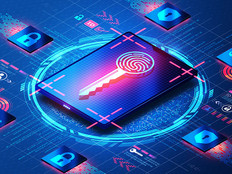Crime-Stopping Cameras
February 2011 E-newsletter
Crime-Stopping Cameras
Investigations & Virtualization
Ask Sgt. Rosalind Perry of the Dallas Police Department what she thinks about surveillance cameras, and you'll get an enthusiastic response. In 2010 alone, the department's Camera Surveillance Unit (CSU) registered 2,400 arrests in the downtown business district, thanks to the view offered by the 50 cameras mounted around the city.
"When we first started deploying these cameras in 2007, I was apprehensive," Perry says. "But seeing their ability to catch criminal activity and to reduce crime, as well as the officers' excitement and morale, I anticipate using them more and more."
Today, the city has 137 cameras, including a blend of Sony and Panasonic wireless IP network cameras, strategically placed around Dallas with a high concentration tacked to light and traffic poles downtown. The CSU relies on three shifts of full-duty, retired and light-duty officers to monitor a bank of cameras from a central command center 24 hours a day.
Good Business
The deployment is partially funded by downtown businesses to curb panhandling, loitering, harassment, and other crimes and misdemeanors. Each camera's ability to pan, tilt and zoom has led to CSU officers spotting some crimes before a 911 call is made or a patrol officer arrives on the scene. In addition, the CSU team can inform dispatch and patrol officers of the situation so they take appropriate action.
For instance, one camera viewed a shooting, and the police were able to broadcast the recorded tape on local news broadcasts. "This led to the identification and arrest of that individual," Perry says.
Each camera continuously streams data via a wireless mesh network back to the command center. Perry says the recordings are stored for only 14 days unless they are needed longer to settle internal and external complaints or as evidence in legal disputes. "Because the video records 24x7, we are able to view what happened before an actual incident, such as a robbery or bus accident," she says.
Dilip Sarangan, industry analyst for Frost & Sullivan North America's AutoID and Security practice, has seen a heightened interest in IP network cameras for public safety. However, he warns that some agencies fail to use the cameras to their full potential because they don't think through several factors, such as how to monitor the video streams or placement of the cameras.
"Officials, IT and facilities all have to work together to make sure that cameras are optimally placed and that there is enough staff to proactively monitor and react when a situation occurs," Sarangan says.
To that end, the CSU conducted a risk assessment and site survey to determine where to locate the cameras, which are clearly visible and marked with the police department's emblem. Primary factors included known crime areas, availability of ambient lighting, density of seasonal foliage, exposure to weather and possibility of vandalism.
4
The number of seconds it takes the Marshfield Police Department to start gathering conclusive evidence once its IP network cameras have been activated
Privacy, Please
In the town of Marshfield, Mass., the police department proceeded with similar caution in placing the town's 14 Axis Communications IP network cameras in the town hall, the library, the airport and the recreational center. Marshfield uses a mix of AXIS 215 and 233D models. Lt. Paul Taber, director of emergency management, says the biggest obstacle to deploying the cameras was a public expectation of privacy. To address this, the police department uses a third-party privacy filter on the cameras that lifts when the cameras are activated.
Because the town doesn't have enough police officers to monitor camera feeds, Marshfield town employees who work near the cameras have been equipped with portable panic buttons that they can press when they encounter suspicious activity. This not only opens the camera privacy filter and starts recording but also alerts police dispatch, patrol officers and other authorized personnel.
For instance, a camera has been installed in the children's section of the town library because of concerns about pedophiles. If a librarian sees anything inappropriate, she can hit the panic button and police officers can remotely pan, tilt and zoom in with the camera to view suspicious activity and relay that information to the dispatched officer. "The cameras don't replace a 911 call, but they provide a faster response and capture video evidence," Taber says.
Taber says it's difficult to quantify the savings incurred by the IP network cameras but says he's pleased with their effectiveness and calls them "an incredible crime deterrent."
The Heat Is On
Video surveillance cameras can be useless in poorly lit areas, during storms or when smoke, haze or fog descend. But thermal imaging cameras such as the AXIS Q1910/-E can detect people, objects and incidents in complete darkness and harsh environmental conditions. Such devices tend to be more accurate and more reliable than conventional network cameras.
Lt. Paul Taber, director of emergency management for the town of Marshfield, Mass., can envision using thermal imaging coupled with better video compression provided by the newer H.264 standard to detect unauthorized, after-hours access to town hall and other critical buildings and infrastructure. "Our goal is to have a system that is highly expandable and useful for the next 30 years. Thermal sensors would definitely be part of that," he says.







